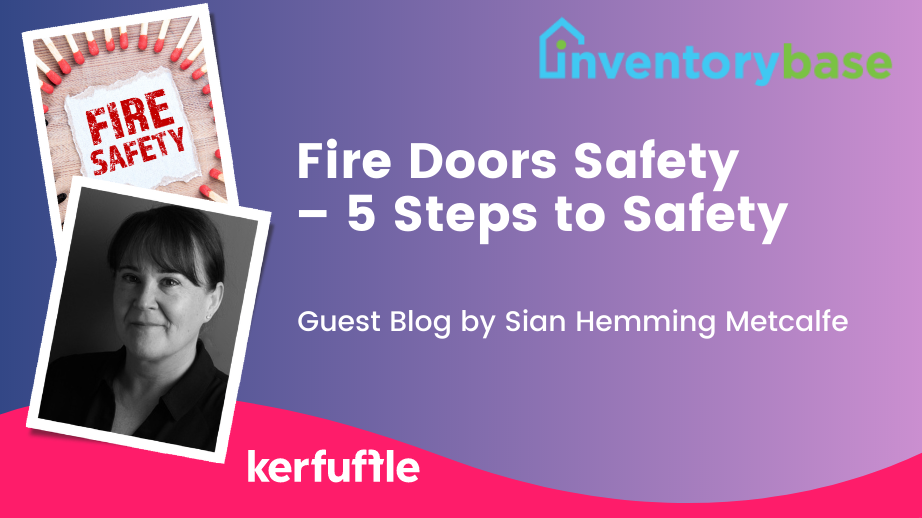It doesn't need to be Fire Door Safety Week to raise awareness of the critical role that fire doors play in saving lives and protecting property in the unfortunate event of a fire.
Background to fire safety legislation
Throughout the 20th century, legal provisions for fire safety in the UK have been created and underpinned by over 70 pieces of legislation. Each law has addressed specific needs but the piecemeal nature of the regulation caused confusion and created dangerous loopholes.
The main problem has been in establishing enforceable responsibilities to cover all environments and every conceivable eventuality.
More than 60,000 fires in residential and business premises occur every year.
In 2005 the Regulatory Reform (Fire Safety) Order was introduced to consolidate and replace all previous provisions. It applies to England and Wales only, because Scotland and Northern Ireland have their own sets of regulations.
The order applies to virtually all non-domestic premises, with a few exceptions.
Fire safety in the rental sector
Workplaces in general are subject to its stipulations but so too are properties in the private rental sector.
While these are clearly domestic environments, the fact that the contract between landlord and tenant is a commercial one brings them under the scope of the order. Instead of the fire authorities, it is now the landlord who must ensure adequate protections are in place.
This applies specifically to homes in multiple occupation (HMOs) but landlords would be wise to observe its provisions in any property.
Landlords
One of the main features of the order is to identify the ‘responsible person’ in each situation. In the private rental sector, this designation applies to the landlord.
Even if there is a management agent acting on their behalf, landlords cannot delegate this legal responsibility.
Their obligations include taking all reasonable measures to reduce the risk of fire and to ensure tenants have safe escape routes should a fire break out. On the basis that prevention is the best protection, every responsible landlord should install and maintain fire doors.
What is a Fire Door?
It may look like a normal door but it is, in fact, an engineered device designed to delay the progress of fire and the spread of smoke long enough for occupants to escape. A fire door consists of the door leaf, frame, glazing, fire and smoke seals as well as the metal fittings including hinges and locks.
While a standard door offers only negligible resistance to flames and smoke, a fire door is built to withstand them long enough to enable safe evacuation. Made of durable substances such as gypsum, glass and aluminium with a core of fire-resistant material, fire doors can be customised to fit most doorways.
Five measures every landlord should take
1. If a property does not comply with the Fire Safety Order then the landlord must install fire doors at the access points to escape routes and at all entrance ways.
It is essential to fit doors with a Fire Door rating, which tells you how long the door can hold back fire and smoke. The lowest rating is FD30, which means the door will remain effective against fire and smoke for up to 30 minutes.
This gives ample time for escape from smaller buildings
FD60 and FD120 doors will hold out for an hour and two hours respectively, making them ideal for larger premises such as high-rise structures. There are also doors which carry a rating followed by the letter S to confirm their smoke resistance.
2. All fire doors must be correctly installed
Even if you select properly tested and certified fire doors, their effectiveness will be severely compromised unless they are fitted by qualified professionals. Poor installation creates vulnerabilities which will allow fire and smoke to break through much more quickly than expected.
3. It is crucial to keep fire doors properly maintained
Like ordinary doors, they are in constant use, which inevitably leads to wear and tear. Unlike ordinary doors, the consequences of damage and deterioration are not merely cosmetic but could cost lives.
A responsible landlord must not only establish a programme of routine maintenance but should also make fire doors part of any property inspection.
4. Even when certified fire doors have been correctly installed, there is still the potential for tenants and occupants to misuse them.
Fire doors are fitted with automatic door-closers so that at the first sign of fire they will shut automatically. Anything that interferes with this function will render them useless. At Inventorybase, we’ve come across many instances of tenants wedging fire doors open. They might see this as a short-term convenience without understanding how they are putting themselves and the property at risk.
5. It’s essential to educate all tenants and occupants as to the need to keep fire doors unobstructed at all times.
This is another issue that should form part of every property inspection. There are compliant methods of holding them open such as retainers which respond to alarms or have built-in sensors enabling them to release the doors.
If you’re considering this option, then make sure that whatever equipment you fit complies with all legal requirements. Ideally, they should be certified to BS EN 1155:1997 and BS EN 1634.
Landlords should familiarise themselves with the provisions of the Regulatory Reform (Fire Safety) Order and ensure that they have certified doors professionally installed, regularly maintained and correctly used.
Fire door safety checks
The British Woodworking Federation have created a guide and advice for privately rented properties around a landlord obligations, the importance of a fire door and how to identify and inspect a fire door as part of the Fire Door Safety Week initiative.
Fire door safety templates

At Inventory Base we recognise that clerks are the landlord’s eyes and ears so we’ve designed our property management software to be customisable, enabling tasks such as fire door inspections to be included as part of all check-ins, check-outs and interim reports.
We have created both a detailed and basic fire door templates to either add into the inventory report or as a standalone service option to check the safety of the door against the recommended 5 Sep Fire Door Checklist.
To access the templates and add them to your list of services, visit your Inventory Base account and click on Template Library, select Health & Safety and access either:
- Fire Door – Safety Checklist – Five Point Checklist
- Fire Door – Safety Checklist – Detailed Assessment
To find out more about how Inventory Base can help your business: https://www.kerfuffle.com/suppliers/inventorybase





